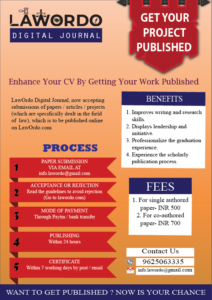Legal Drafting Rules And Tips
AMITY LAW SCHOOL, NOIDA
“One should not aim at being possible to understand, but at being impossible to misunderstand.” “Have something to say, and say it as clearly as you can. That is the only secret of style.” “You don’t write because you want to say something, you write because you have something to say.”
Drafting is the synthesis of law and fact in a language form. This is the essence of the process of drafting. All three characteristics have equal importance. Legal drafting is the crystallization and expression in definitive form of a legal right, privilege, function, duty or status. It is the development and preparation of constitutions, statutes, regulations, ordinances, contracts, wills, conveyances, trusts and leases.
The process of drafting operates in two senses: the conceptual and the verbal. Besides seeking the right words, the draftsman seeks the right concepts. Therefore, drafting is first thinking and then composing.
Drafting, in legal sense, is an act of preparing the legal documents like agreements, contracts and deeds. A proper understanding of drafting cannot be realized unless the nexus between the law, the facts and the language is fully understood and accepted. Drafting of legal documents requires, as a pre-requisite, the skills of a draftsman, the knowledge of facts and law so as to put facts in a systematized sequence to give a correct presentation of legal status, privileges, rights and duties of the parties and obligations arising out of mutual understanding or prevalent customs/usages, or terms and conditions, breaches and remedies, etc in a self-contained and self-explanatory form without any patent/latent ambiguity or doubtful meaning.
To collect, consolidate and coordinate the above facts in the form of a document, it requires serious thinking followed by prompt action to reduce the available information into writing with a legal meaning, open for judicial interpretation to derive the same sense and intention of the parties with which and for which it has been prepared, adopted and signed.
GENERAL PRINCIPLES OF DRAFTING
Drafting of legal documents is a skilled job. A draftsman in the first instance must ascertain the names, description and addresses of the parties to the instrument. He must obtain the particulars about all necessary matters which are required to form part of the instrument. He should also note down any particular directions or stipulations with the provision which are to be kept in view and to be incorporated in the instrument. The duty of a draftsman is to express the intention of the parties clearly and concisely in technical language. With this end in view, he should first form a clear idea of what these intentions are.
When the draftsman has digested the facts, he should next consider as to whether those intentions can be given effect to without offending against any provision of law. Therefore, he must read the introductory note, or, if time permits, the literature on the subject of the instrument. He must note down the most important requirements of law which must be fulfilled while drafting complete instrument on the subject. The validity of document in the eye of law cannot be ignored and at the same time, the facts which should be disclosed in the document cannot be suppressed. Nothing is to be deleted or admitted at random. Therefore, knowledge of law of the land in general and knowledge of the special enactments applicable in a particular situation is an essential requirement for a draftsman to ensure that the provisions of the applicable law are not violated or avoided.
Legal language should be precise and accurate. All the time the draftsman must keep his eye on the rules of legal interpretation and the case-law on the meaning of particular words.
The ability of the best advocates in the world is that they can take a complex subject and express it in simple terms. Simplicity will always be more powerful than complexity.
LEGAL DRAFTING TIPS
There are certain general legal drafting tips which are helpful to produce a quality document:-
- In case the client is unknown, a stab needs to be taken there and then. An assessment should be made of the client’s sophistication.
- If the purpose of the letter is not known, then it cannot be achieved.
- If in doubt, shorter sentences should be used instead of longer ones.
- Nifty phrases like “we advise that”, “we note that” are all the rage and are almost always useless. Primarily, these phrases pop up when somebody doesn’t know how to start their sentence and fears that without a nice little introduction the letter will seem sudden or unexpected. Sometimes that is right- but normally it is not.
- It doesn’t matter what area of practice one is in, there is always a chance that one day a judge will be looking at your document and assessing how it impacts on a decision. If one doesn’t want it read out in Court while one is standing there, it should not be written it down.
- Jargon should be avoided.
- Law school has taught every student that their legal knowledge must be displayed through a ponderous swathe of legal citations which is false. In fact, ordinarily, case citations are an irritating distraction from the content of the letter. Citations do have a position but should be used wisely in most correspondence and documentation (court submissions are an obvious exception).
RULES OF DRAFTING
The following principles should be followed while drafting the documents:-
- Drafting of legal documents is a skilled job. A draftsman, in the first step, must ascertain the names, description and addresses of the parties to the instrument. The duty of a draftsman is to express the intention of the parties clearly and concisely in technical language.
- Legal Provisions- A draftsman must note down the most important requirements of law which must be fulfilled while drafting complete instrument on the subject. All the time the draftsman must keep an eye on the rules of legal interpretation and the case-law on the meaning of particular words.
- Choosing the right word- For using particular words and phrases in the conveyancing, the draftsman must be cautious about the appropriate use of the words and should be clear of its meaning.
- Self-explanatory- As far as possible the documents should be explanatory. The draftsman should begin by satisfying himself that he recognizes and understands what he means to say in the document.
- The well drafted document should be clear to any person who has competent knowledge of the subject-matter. The draft must be readily intelligible to layman.
- Avoiding negative statements- Nothing is to be deleted or admitted at random on the document that is to say negative statements should generally be avoided.
- Logical order- The order of the draft should be strictly logical. The text of the documents should be divided into paragraphs containing the relevant facts. Each paragraph should be self-explanatory and should be properly marked by use of numbers of letters for clause, sub-clause and paragraphs.
- Schedules, enclosures or annexures- Document should be supported by the schedules, enclosures or annexures in case any reference to such material has been made in that.
- Schedule should be provided in the documents. Schedule is a useful part of the document as it contains the relevant information which forms part of the document
- But should not be inserted in the body of the document. The main function of the schedule is to provide supplementary test to the document with clarity and convenience.
- Put yourself in the place of reader- Read the document and meet the requirements about the content, interpretation and the sense it carries.
LEGAL IMPLICATIONS AND REQUIREMENTS
- Drafting of documents is very important part of legal documentation. Documents are subject to interpretation when no clear meaning could be inferred by a simple reading of the documents. The legal implications of drafting may be observed as under:
- Double and doubtful meaning of the intentions given shape in the document.
- Inherent ambiguity and difficulties in interpretation of the documents.
- Misinterpretation of facts leading to wrongful judgment.
- Causing harm to innocent persons.
LEGAL DRAFTING: SOME DO’S AND DON’T’S
Legal writing should be enhanced, but doesn’t have to be pompous. Writing can be enhanced when the language is simple, direct and strong. To make the writing clearer and easier to read- and thus more effective- prefer the simple word.
Instead of using the words like construct, fabricate, initiate, commence, terminate and utilize; words like make, begin, end, use, large part and allow.
- Prefer the active to the passive voice sentences unless the passive voice in a particular connection makes the meaning more clear.
- The active voice eliminates confusion by forcing to name the actor in a sentence. The construction makes clear to the reader who is to perform the duty. The passive voice makes sentences longer and confusing. Who is responsible is much less obvious.
- The material will be delivered by whom?
- The commencement date is to be decided by whom?
- The figures must be approved by whom?
- Putting the actor before the verb forces one to be clear about responsibility.
- The messenger will deliver the material.
- The contractor will decide the start date.
- The administrator must approve the figures.
[The passive voice is appropriate when the actor is not known or is obvious. This does not apply in regulatory text.]
- Instead of using give consideration to, consider should be used.
- Instead of using is applicable to, applies to should be used.
- Avoid several negatives in one sentence.
- A demonstration project will not be acceptable unless all application requirements are met.
- Instead, a demonstration project will be approved only if the applicant meets all requirements.
- One should never use the word pairs, if the words have the same effect or where the meaning of one included the other.
Examples: Word pairs to avoid-
- Any and all
- Authorize and direct
- Cease and desist
- Each and every
 AUTHORED BY: SANAH SETHI
AUTHORED BY: SANAH SETHIAMITY LAW SCHOOL, NOIDA

